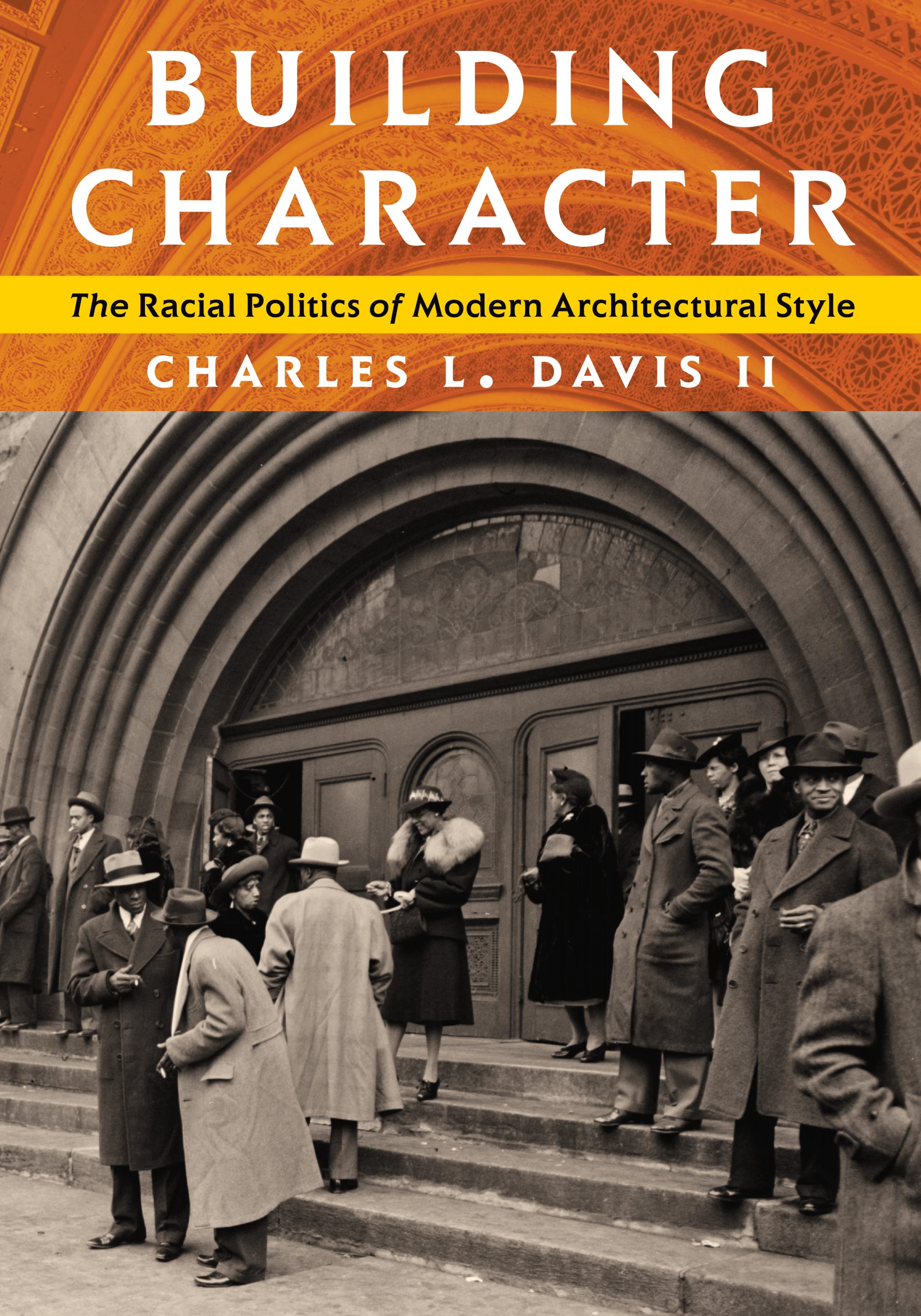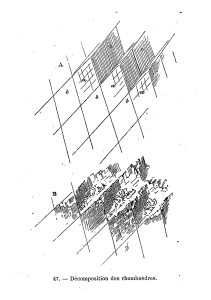Charles Davis
University of Pittsburgh Press, 2019

“White supremacy is the unnamed political system that has made the modern world what it is today,” writes Jamaican philosopher Charles W. Mills in the opening lines of The Racial Contract, published in 1997. That system operates in the background of the theoretical writings discussed by Charles Davis in his book Building Character: The Racial Politics of Modern Architectural Style. Based on Davis’s doctoral dissertation, the book’s four chapters are organized into two parts: “The Aryan Character of Alpine Architecture” and “The Whiteness of American Architecture.” In 1906, the Fourteenth Amendment, which was meant to give African Americans, and others, equal rights as free persons, was used by corporate lawyers to argue that corporations can legally acquire personhood and the rights and freedoms accessed by free persons. If corporations are considered persons, then buildings, many of which are the face of corporations and figures associated with capitalism, can have character. The book provides a race-conscious reading of the development of notions of architectural style in relation to conceptions of race and architectural character by focusing on the writing of five white architect-theorists: Eugène Emmanuel Viollet-le-Duc, Gottfried Semper, Louis Sullivan, Frank Lloyd Wright, and William Lescaze. As Mills looks at key thinkers of the Enlightenment through a race-conscious lens to highlight their racist character, Davis does the same as he looks at the underlying racial theories of architectural thinkers who are the product of the Enlightenment.
Davis looks at the history of architecture not by tracing the development and evolution of architectural forms since the Enlightenment but by noting the homogeneity of architects recorded in this history over the past two centuries, all elite white men. He considers the stratification of architectural practice and history writing along racial and class lines. In this sense, there is little progress in our collective understanding of the architectural canon which has continued to maintain and normalize whiteness and to disassociate labor from the notion of architectural genius in the making of canonical works. Through the lens offered by Davis, a racial reading of architectural thought reveals the mechanisms of inclusion and exclusion, the structures of power which architects serve and constantly emulate, and the consistent omission of labor, often carried out by the poor working classes and by exploiting people of color. Davis’s project belongs to a history of critiquing the canon, particularly in the past two decades by historians such as Zeynep Çelik, Sibel Bozdoǧan, and Esra Akcan. While these historians—all Turkish women who immigrated to the United States—expose the Eurocentricism of the canon, Davis extends this critique to highlight the racial politics of the practice and history of architecture within a Euro-American context.

Figure 1. Viollet-le-Duc, geometrical analysis of tectonic plates, 1876. Le massif de Mont Blanc, plate 47. Building Character p. 35.
The stratification of humans into racial categories was coupled with the invention of architectural stylistic archetypes that represent various regions of human habitation. Sir Banister Fletcher’s “Tree of Architecture,” in print well into the twentieth century, represented this racialized world view. Taking this long history into consideration, the call for “critical regionalism” in the 1970s was not a progressive critical thought; rather it was a regressive conception that pushed back debates on architecture and identity by a century. To search for the echo of such ideas, Davis examines five architects who “collectively defined architectural character as a transparent reflection of the inner character of a national subject, sometimes the user of a building and sometimes the designer” (16). Davis looks at French rationalists, German tectonic theorists and American organicists, all of whom trace notions of contemporary architecture tied to notions of national origin. The French chalet, Alpine housing typologies, or the prairie house are seen as evolving from theories animated by notions of race, particularly whiteness. Evolutionary thought, championed by Charles Darwin in the nineteenth century, found its way into architectural thought. Despite many evolutionary theories being proved wrong a century later, their impact on architectural thinking has yet to be critiqued with the necessary force.

Figure 2. Samuel Wale, frontispiece to the English translation of Marc-Antoine Laugier’s Essay on Architecture (1755). Building Character p. 70. https://drawingmatter.org/origins-in-translation/
As such, it is important to complicate this picture by considering the ways in which similar ideas appeared sporadically and often contemporaneously in other national contexts, including the global South. For example, debates around the nature of national character, in resistance to the colonial and Western imposition of forms and aesthetics, often called for the imagination of a precolonial and ethnically defined architecture, such as the Turkish house in Turkey or the revival of Pharaonic and Islamic forms in Egypt. Even the celebrated proposition of ethno-organicism by Hassan Fathy as demonstrated in his New Gourna Village (1945) is driven by this Enlightenment notion of the ethnically-defined monocultural nation-state. In 1939 architect Amin Mukhtar published a rebuttal in the second issue of Al Emara (“Architecture”) magazine to the editorial piece by Sayed Karim in the inaugural issue. In “What is Architecture?” Karim argued that architecture is a scientific art tied to materiality and method. Through this lens he reads the history of architectural development to ultimately argue that, as societies across the world continue to have access to the same materials and know-how, architecture will be increasingly unified with only slight differences based on location. Mukhtar’s response argues for an organicist evolutionary reading of architectural development, suggesting that as the human species develops architecture becomes increasingly diverse in its cultural expression. For example, he compares early humans, who used a leaf to cover their groin regardless of where they were from, with modern humans, who exhibit incredibly diverse fashion sensibilities, much of it defined by ethnic and national identities, maintaining that like fashion, architecture should reflect the same cultural and ethnic diversity. Considering debates such as Mukhtar’s and Karim’s around issues of identity, race, and architecture to triangulate the conversation about notions of race and identity in architecture, expands the project beyond a critique of whiteness.
An important revisionist intellectual history of architecture—one that should have appeared decades ago—Building Character is a sign of how slow architectural discourse and academia can be to catch up with cultural, political, and societal shifts such as those triggered by the Civil Rights movement in the 1960s. The caveat of this project is that it is driven by the “opposing side”; it is an act of responding, of holding a mirror to Eugène Emmanuel Viollet-le-Duc, Gottfried Semper, Louis Sullivan, Frank Lloyd Wright, and William Lescaze. White supremacy appears to get smarter and stronger from critiques of it as it morphs into new forms and sharpens its tools to maintain its position. What is needed is a counter-intellectual history that writes blackness into the history of architecture, which is precisely the subject of Building Black Utopias, Davis’s follow-up project to Building Character. While the book maintains the feel of a dissertation in its organization, approach, and language, it is essential reading for students of race, cultural politics, and the history of thought and architecture.

Figure 3. PSFS building, Philadelphia, George Howe and William Lescaze, 1929. Building Character p. 170.
Mohamed Elshahed is an independent writer, curator, and critic of architecture. He is the author of Cairo Since 1900: An Architectural Guide (AUC Press, 2020), and the curator of Cairo Modern, scheduled to open at the Center for Architecture in New York City in October 2021. He resides in Mexico City.
How to Cite This: Elshahed, Mohamed. Review of Building Character: The Racial Politics of Modern Architectural Style, by Charles Davis, JAE Online, October 8, 2021.






